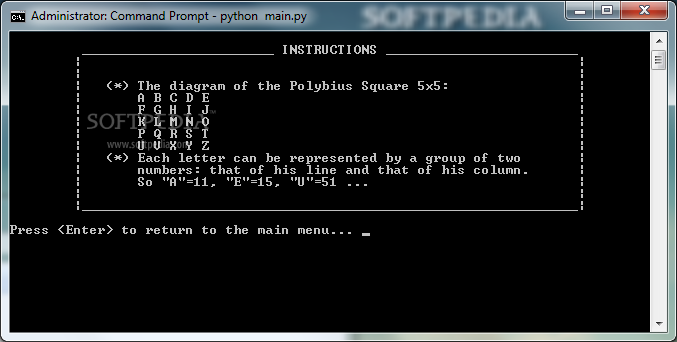

This strongly suggests the cryptological technique of disguising word-lengths in ciphers by arranging letters in regular patterns.Ī separate line of this research centered on four melodic fragments cited in Variation XIII from Felix Mendelssohn’s concert overture Meeresstille und glückliche Fahrt ( Calm Sea and Prosperous Voyage) Op. McClelland, this recurring feature suggests spaces between words: Elgar’s six-bar phrase is achieved by the characteristic four-note grouping, repeated six times with its reversible rhythm of two quavers and two crotchets. Clive McClelland finds evidence for a coded message in the Enigma Theme’s opening six bars based on regularly spaced quarter note rests at the start of each measure. A saying is a string of words that typically form an adage. One definition of dark is secret or hidden. Such an interpretation of the phrase “dark saying” is made possible by the definitions of its terms.

ISBN 2-3.Besides a missing principal melody, Elgar acknowledged in the 1899 program note that the Enigma Theme has a “dark saying” that “must be left unguessed.” Such cryptic language insinuates the existence of a coded message hidden away within the Enigma Theme.
#Polybius square html code#
The Code Book: The Science of Secrecy from Ancient Egypt to Quantum Cryptography.
Simon Singh's 'The Code Book' is an excellent introduction to ciphers and codes, and includes a section on substitution ciphers. Wikipedia has a good description of the encryption/decryption process, history and cryptanalysis of this algorithm. The only minor difference is that cryptanalysis must now be done on pairs of characters instead of single characters. This means that the whole section on cryptanalysing substitution ciphers is applicable, and will not be repeated here. The Polybius Square is quite easy to break, since it is just a substitution cipher in disguise. >p.decipher('CEBCCDBCCBCEEBABBCBCBDEAEBEDBDCACACCCDEBABBCDDBDEAEBCABC') 'CEBCCDBCCBCEEBABBCBCBDEAEBEDBDCACACCCDEBABBCDDBDEAEBCABC' >p.encipher('defend the east wall of the castle') >p = PolybiusSquare('phqgiumeaylnofdxkrcvstzwb',5,'ABCDE') To encipher messages with the Polybius square cipher (or another cipher, see here for documentation): >from pycipher import PolybiusSquare To encipher your own messages in python, you can use the pycipher module. JavaScript Example of the Polybius Square § It is interesting to note that the ADFGVX cipher uses a 6圆 version of the polybius square as the first step in its encryption. 'mammoth', be careful not to include the repeated characters in the cipher alphabet. If your keyword has repeated characters e.g. To create the square, the first 5 characters make the first row, the second 5 characters make the second row etc. Here we have written out the key as a single string instead of a square. Using the keyword 'zebra', the key would become (i/j are combined): cipher alphabet: zebracdfghiklmnopqstuvwxy 'zebra' to generate it, since it is much easier to remember a key word compared to a random jumble of 25 characters. When generating keys it is popular to use a key word, e.g. Decryption is just as easy, by using 2 cipher characters as the row and column into the key square to get the original plaintext character back. It is easy to see how each character in the plaintext is replaced with 2 characters in the cipher alphabet. (the letters along the top and side can be chosen arbitrarily): A B C D EĪn example encryption using the above key: plaintext: d e f e n d t h e e a s t w a l l o f t h e c a s t l eĬiphertext: CCBACBBABECC EDABBA BABBDDED EABBBDBD CACB EDABBA DBBBDDEDBDBA Keys for the Polybius Square usually consist of a 25 letter 'key square'. The text we will encrypt is 'defend the east wall of the castle'. Here is a quick example of the encryption and decryption steps involved with the Polybius Square. This algorithm offers very little communication security, and can be easily broken even by hand, especially as the messages become longer (more than several hundred ciphertext characters). It can ususally be detected if there are only 5 or 6 different characters in the ciphertext. The Polybius Square is essentially identical to the simple substitution cipher, except that each plaintext character is enciphered as 2 ciphertext characters.






 0 kommentar(er)
0 kommentar(er)
